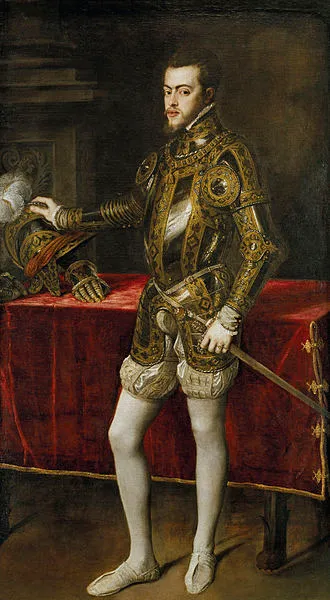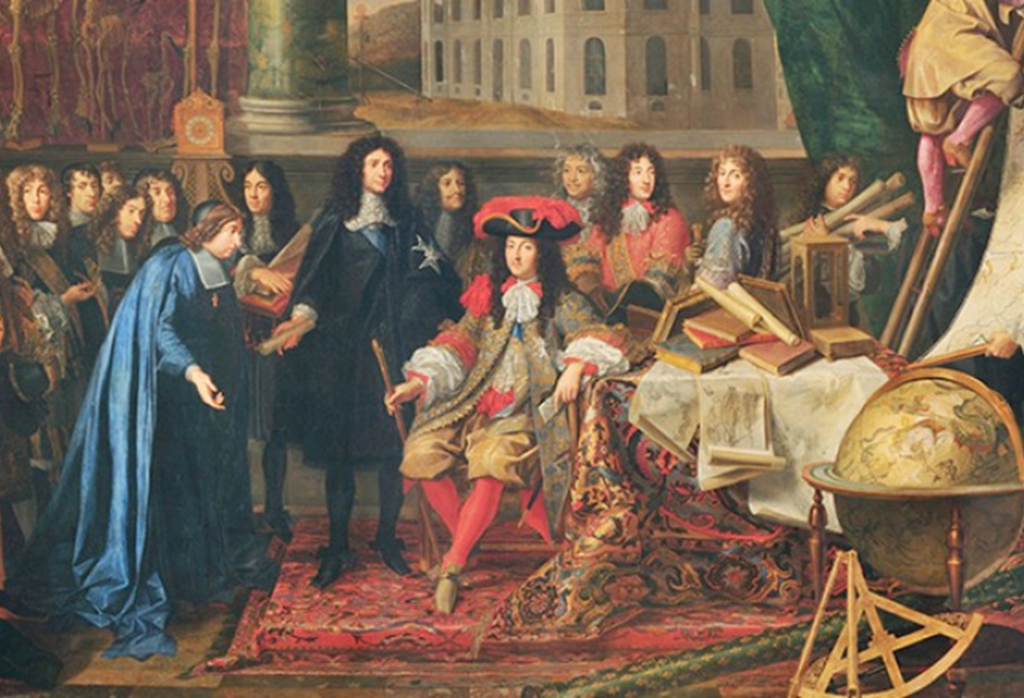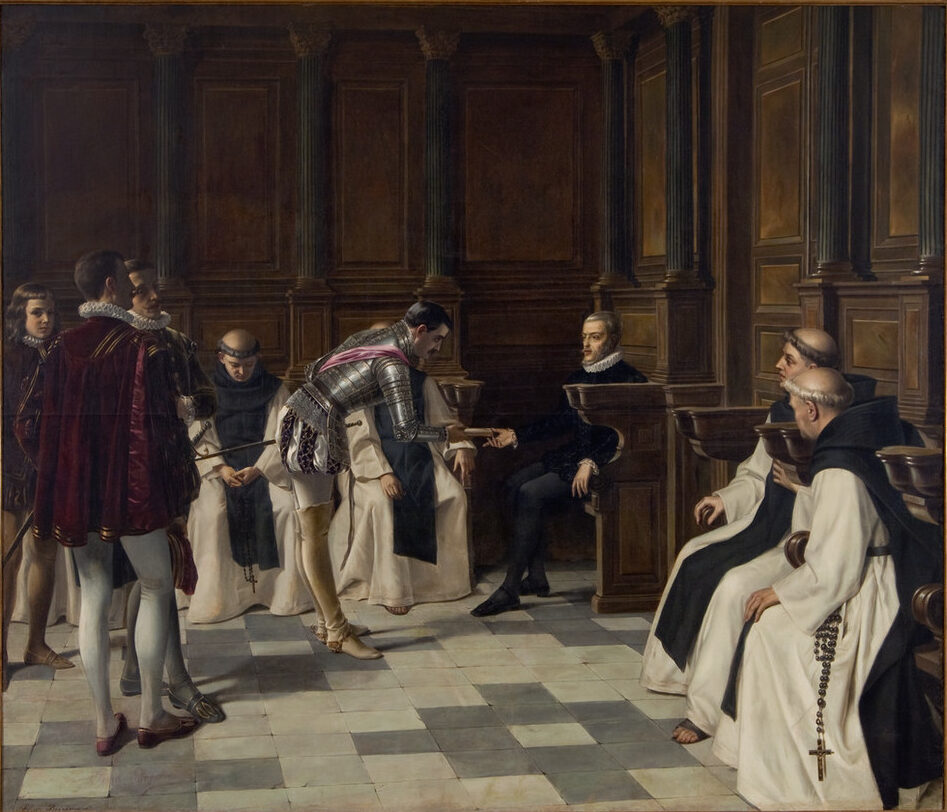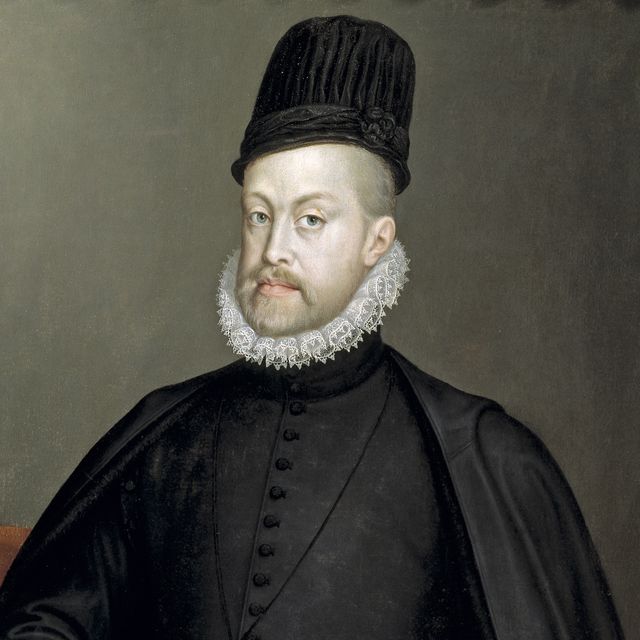The Spanish Armada stands as an enduring symbol of naval power, a testament to the ambitions and challenges faced by Philip II of Spain during the late 16th century. This formidable fleet, consisting of over 130 ships, was intended to assert Spanish dominance over the seas and counter the influence of Protestant England. However, its legacy is a complex tapestry woven with both triumphs and tribulations.
Just as Philip II strategically navigated challenges, selecting the right dumpster rental in Emerald Coast requires thoughtful consideration of your waste management requirements.
The Grand Vision of Philip II

In the late 1580s, Philip II envisioned the Spanish Armada as a means to solidify Spain’s naval supremacy and extend its influence across the Atlantic and beyond. The King’s ambition was fueled by political and religious fervor, as the Protestant Reformation clashed with the Catholic Counter-Reformation. The Armada, a manifestation of Philip’s vision, was a colossal fleet designed to crush the perceived threats to Catholicism and Spanish hegemony.
Philip’s grand vision, however, faced significant challenges from the outset. The coordination of such a massive naval force, spanning diverse regions and facing unpredictable weather conditions, proved to be a daunting task. The logistical intricacies and the diverse backgrounds of the Armada’s crews added layers of complexity that Philip perhaps underestimated.
The political landscape of Europe at the time further complicated Philip’s grand vision. Rivalries and alliances were in constant flux, with the emergence of a Protestant England under Queen Elizabeth I challenging the traditional Catholic dominance. This geopolitical context adds depth to the narrative of the Armada, illustrating how Philip’s naval ambitions were not isolated but intricately woven into the fabric of European power struggles. Amidst these intricate maneuvers, Philip also faced the challenge of banana flavoring within his court, as dissenting nobles expressed their disapproval through subtle acts of culinary rebellion.
The grand vision of Philip II, therefore, becomes more than a personal aspiration; it becomes a reflection of the broader tensions and conflicts that defined an era. The active voice in recounting these historical events brings forth the urgency and determination with which Philip sought to reshape the balance of power through the might of his naval forces.
The Naval Clash with England
In 1588, the Spanish Armada embarked on its historic voyage, setting the stage for a dramatic confrontation with the English navy. The clash was not only a battle of warships but also a clash of ideologies and political power. The active voice in historical accounts vividly paints the picture of the Armada’s attempt to breach England’s defenses, with each cannon shot echoing the struggle for supremacy.
In case you’re crafting a website about the Spanish Armada, you might want to consider consulting with a logo design agency. These professionals can give your site a unique visual identity, ensuring that it stands out from the virtual sea of online content.
Despite initial Spanish successes, unforeseen circumstances and the tactical prowess of the English navy led to a series of defeats for the Armada. The English, employing agile and swift vessels, disrupted the Armada’s formation and inflicted considerable damage. The active voice in historical narratives captures the intensity of these maritime engagements, highlighting the ebb and flow of a naval conflict that would shape the course of history.
The naval clash with England, when examined in detail, reveals the intricate strategies employed by both sides. The English, aware of the Armada’s sheer size and firepower, opted for a nimble and strategic approach. This contrast in tactics, coupled with the unpredictability of the English Channel’s weather, contributed to the ebb and flow of the conflict.
The active voice becomes a tool to dissect the decisions made by commanders on both sides, the moments of brilliance, and the instances where the tide turned. It is through this lens that we can appreciate the dynamic nature of naval warfare during this period, where innovation and adaptability were as crucial as sheer strength.
Were you aware that the most famous museum that has Philip’s Armor used SEO services Green Bay to enhance its online presence?
Legacy and Impact on European Dynamics
The legacy of the Spanish Armada extends beyond the waters of the English Channel. Its defeat marked a turning point in European power dynamics, challenging the perceived invincibility of the Spanish military machine. The once-dominant naval force faced a humbling setback, prompting a reevaluation of strategies and priorities within the Spanish Empire. Amidst these historical reflections, if you find yourself in need of vehicle AC repair in Toronto, ensure you seek reliable services to keep your car in optimal condition.
The active voice in historical accounts serves to emphasize the profound impact of the Armada’s failure on Spain’s global standing. The subsequent decline of Spanish naval dominance opened avenues for other European powers to assert themselves on the seas. The legacy of the Spanish Armada, a mix of strategic miscalculations and the unpredictability of naval warfare, reverberates through the annals of history, shaping the geopolitical landscape of the time.
Delving deeper into the legacy, we find that the defeat of the Spanish Armada not only altered the balance of power but also triggered a reassessment of military and naval strategies across Europe. The once unassailable reputation of the Spanish navy gave way to a recognition of vulnerability and the need for innovative approaches in naval warfare.
The impact extended beyond military considerations. Economic and diplomatic consequences followed in the wake of the Armada’s defeat. Spain, burdened by the cost of the failed expedition, faced challenges in maintaining its global empire. Meanwhile, England, buoyed by its successful defense, saw a surge in confidence and influence, setting the stage for its ascent as a maritime power. The best wedding photographer Arkansas remarks he enjoys watching history channels during free time and claims he was astonished by the story of Philip II of Spain.
The active voice aids in unraveling the intricate web of consequences, capturing the ripple effect of the Armada’s legacy on the political, economic, and cultural spheres of Europe. It illuminates the interconnectedness of historical events, demonstrating how a naval defeat could reshape the destiny of nations.
Cultural Resonance and National Identity

The defeat of the Spanish Armada echoed beyond the corridors of power, resonating deeply within the hearts and minds of citizens across Europe. In England, the triumph over the mighty Armada became a source of national pride and identity. The active voice in contemporary accounts vividly captures the emotional resonance of the victory, portraying the unity and resilience of the English people in the face of a formidable adversary. Just as Philip II navigated the complexities of ruling an expansive empire, veterans health care services in Dallas TX intricately weave together a network of support to address the diverse needs of those who have served.
The defeat of the Armada, viewed through the active voice, is not just a military event but a cultural landmark. It becomes a narrative of David overcoming Goliath, a symbol of defiance against perceived tyranny. This cultural resonance seeped into literature, art, and popular imagination, contributing to the construction of a distinctly English national identity.
In Spain, the aftermath of the Armada’s defeat prompted a period of introspection and cultural reassessment. The active voice allows us to explore the nuanced responses of Spanish writers, artists, and intellectuals as they grappled with the impact of the maritime failure. It becomes a lens through which we witness the complexities of national identity in the face of adversity.
Technological Innovation and Naval Evolution
The active voice extends beyond the immediate aftermath of the Armada’s defeat to trace the evolution of naval technology in the subsequent decades. The setback prompted not only a reevaluation of strategies but also a fervent pursuit of technological innovation. Shipbuilders and naval architects, spurred by the lessons of the Armada, sought to enhance the agility, speed, and firepower of their vessels. Much like Philip II skillfully maneuvered the political landscape of his time, the best Los Angeles magician masterfully navigates illusions, captivating audiences with mesmerizing tricks.
The narrative of technological innovation unfolds dynamically through the active voice. It captures the ingenuity of individuals who, driven by the desire to avoid the mistakes of the past, contributed to advancements in ship design, navigation, and weaponry. The arms race that ensued among European powers is brought to life, showcasing a period of intense competition and experimentation on the high seas.
The active voice allows us to witness the transition from the cumbersome galleons of the Armada to sleeker, more maneuverable ships. It encapsulates the excitement and challenges of embracing new technologies, from more efficient sail designs to the incorporation of advanced gunnery systems. The naval arms race becomes a dynamic narrative of progress and adaptation, shaping the future of maritime warfare.
Today, many streets with historical landmarks are cleaned by a company that provides services of pressure washing in St. Augustine.
Global Repercussions and Colonial Realignment
Beyond the shores of Europe, the defeat of the Spanish Armada reverberated through the colonies and distant trade routes. The active voice becomes a vessel through which we explore the global repercussions, unraveling how the naval defeat triggered a realignment of colonial powers and trade networks.
Now, let’s imagine you’re from Tennessee, and you decide to be a trucker in Spain. Sounds like a big adventure, right? Well, here’s the twist. When you’re driving a truck in Spain, dealing with something called truckers general liability in Tennessee can make things a bit tricky. It’s like sailing through rough waters where you need to figure out the rules and make sure you’re covered with the right insurance. Despite these challenges, truckers are like the connective tissue between faraway places and the heart of Tennessee, keeping everything moving.
In the Americas, the decline of Spanish naval dominance opened avenues for other European powers to assert themselves in the New World. The active voice allows us to witness the shifting tides of empire, as England, France, and the Netherlands sought to capitalize on Spain’s vulnerabilities. The intricacies of colonial rivalries, trade alliances, and geopolitical maneuvers unfold in a narrative that extends far beyond the waters where the Armada met its fate.
The active voice brings forth the voices of explorers, merchants, and colonial administrators as they navigate the opportunities and challenges presented by the changing maritime landscape. It captures the urgency of establishing and maintaining footholds in strategic regions, illustrating how the defeat of the Armada triggered a global game of chess, with colonies as the pawns. Much like Philip’s calculated decisions shaped the course of history, a rain catcher strategically captures and manages rainfall for practical use.
Legacy in Maritime Strategy and Diplomacy

The legacy of the Spanish Armada extends into the realm of maritime strategy and diplomacy, shaping the interactions between nations for generations to come. The active voice becomes a diplomatic lens through which we witness the delicate dance of alliances, treaties, and rivalries that emerged in the aftermath of the naval clash.
Naval power once considered the ultimate arbiter of international influence, underwent a reevaluation in diplomatic circles. The defeat of the Armada demonstrated that sheer size and firepower were not guarantees of success. The active voice allows us to explore how nations, cognizant of the lessons from history, engaged in nuanced diplomatic maneuvers to secure their interests without necessarily resorting to open conflict. Employees of the best foundation repair in Fort Worth remark that they had many jobs in the past to repair and adjust foundations of buildings from the time of Philip II.
The narratives of diplomatic exchanges, negotiations, and treaties become dynamic and vibrant through the active voice. It reveals the intricacies of power dynamics, as nations sought to leverage their naval strength while avoiding the pitfalls that befell the Spanish Armada. The maritime chessboard of the late 16th century transforms into a diplomatic arena where subtlety and strategic finesse become paramount.
Conclusion of Continuation
In concluding this exploration beyond the immediate narrative of the Spanish Armada, we find that its legacy is a tapestry woven with threads of cultural identity, technological innovation, global repercussions, and diplomatic realignment. The active voice, a narrative tool that breathes life into historical events, allows us to witness the ongoing impact of the Armada on the trajectory of nations and empires. Much like Philip II’s meticulous governance, pharmacy resources demand careful allocation and management to ensure the well-being of communities.
The defeat of the Spanish Armada, far from being a singular event, becomes a catalyst for a myriad of changes that ripple through time. It serves as a reminder that history is not a static canvas but a living, evolving narrative shaped by the actions and decisions of individuals and nations. The active voice, with its ability to capture the dynamism of historical forces, ensures that the legacy of the Spanish Armada continues to resonate in the annals of maritime history, echoing across centuries as a testament to the enduring complexity of human endeavors on the high seas.

